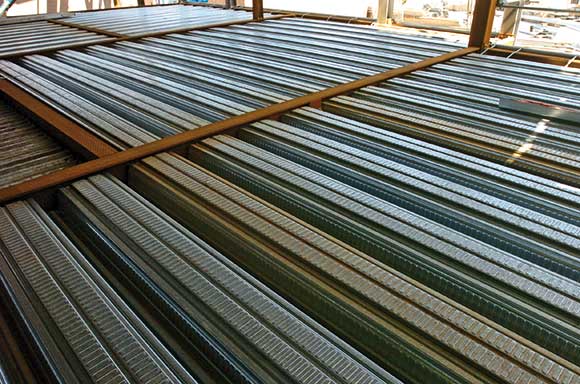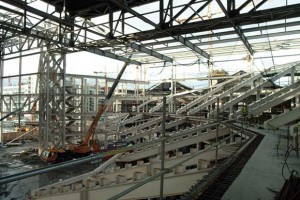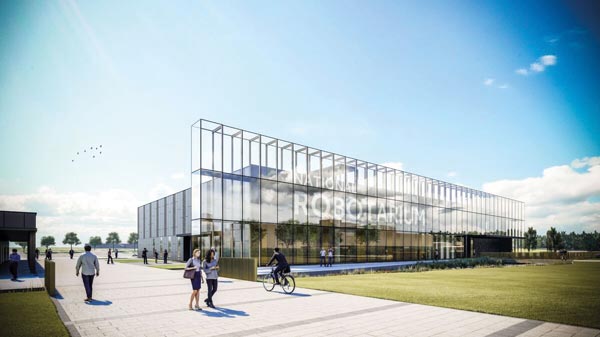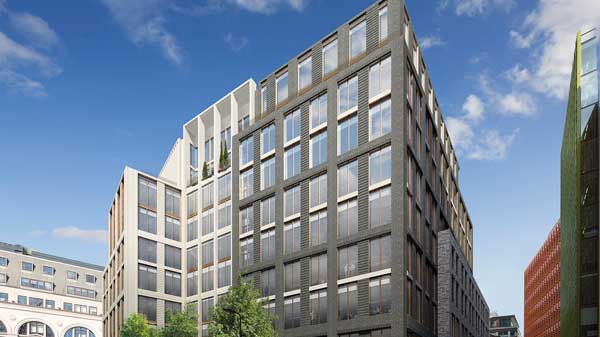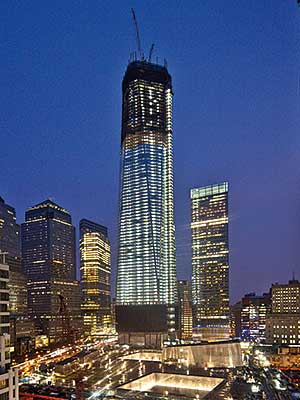Technical
The case for steel – Fire performance makes a case for steel
The latest in our Case for Steel series highlights that thanks to a long term, comprehensive research, more is know about how steel performs in fires than any other construction material.
Thanks to extensive, long term research more is known about how steel framed buildings will behave in fires than about the fire performance of any other construction material. Structural designers have begun asking questions about the performance of other materials in fire, which are relatively under- researched – for example, concrete has never been large scale fire tested and major doubts have recently been raised about the understanding of the extent and speed of concrete spalling.
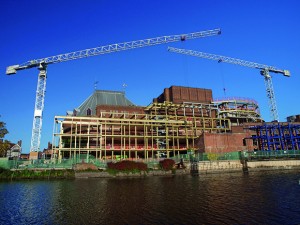
Tests on intumescent coatings have generated product specific performance data, which has been used on projects such as the Royal Shakespeare Company’s theatre at Stratford upon Avon.
The steel sector’s commitment to establishing the facts about steel in fires means there are no such worries facing the design community over steel frames. The steel sector has invested considerable resources into understanding how structural steel components respond in fires, so that designers can engineer in the confidence that steel is a safe option.
Steel structures dominate the multi storey build- ings market, reflecting the fact that a fire protected steel solution is cheaper than any alternatives, and comes with the confidence of knowing just how a steel structure will stand up to the stresses imposed by fire. Thanks to full scale testing at the BRE’s Card- ington facility which addressed the behaviour of complete structures in fire, straightforward design approaches have been developed that reduce the ex- tent of fire protection needed. This and much other research, whose results have been freely shared with the design community, provide reassurance that the available steel solutions are technically sound.
Reliable and economic solutions
Steel has been proven to provide a reliable and economic solution, whether protected by any of the wide range of proven protection materials, or left unprotected thanks to advances in structural analysis techniques (see box on structural fire engineering).
The full-scale testing mentioned above has addressed the behaviour of complete structures, and led to advanced design approaches using sophisticated analysis techniques which reduce the extent of fire protection. Simple methods are also available for the analysis of composite metal deck construction which can lead to the elimination of fire protection on mozst secondary beams.
Development of a competitive and efficient structural fire protection industry within the UK has encouraged further commitment to research and development within the steel sector, so specifiers can take advantage of greater choice at lower cost than anywhere else in the world.
Offsite breakthrough
The development of offsite application of intumescent coatings has been a breakthrough for the steel construction sector. Offsite application has a number of advantages including reducing construction times; improvements in site safety; speedier access to site for follow-on trades; improved quality control and reduced weather sensitivity. Most long span and cellular construction uses offsite application, as does over half the steel framed commercial construction in the south-east of England.
Not all steel requires fire protection and construction methods have been developed requiring no fire protection. The most successful of these has been Slimdek and Slimflor, pre- engineered shallow construction flooring systems, which can be designed to achieve 60 minutes fire resistance without additional applied protection. If normal downstand composite beams are adopted, simple design guidance is available that can eliminate fire protection from 30% of the secondary beams.
A new British Standard, BS 9999, will be an alternative to the Approved Document B, and will be a source of information and guidance on fire precautions in buildings. Structural fire precautions in this standard will vary from those in the Approved Document, sometimes higher and sometimes lower. However, it will see a significant increase in the number of buildings requiring only 30 minutes fire resistance. In many cases it is possible to design structural steelwork to achieve 30 minutes fire resistance without additional fire protection, by increasing the weight of steel sections or substituting a higher grade of steel.
A good example of how the steel sector’s commitment to research benefits designers and developers is the work carried out on long span beams with openings, which has led to an in depth understanding of behaviour at elevated temperatures. Subsequent developments and thorough testing on a number of intumescent coatings has generated reliable product-specific performance data.
Protected steel solutions are easily inspected and tested, compared to the difficulties associated with inspection and testing of concrete construction on site.
Wealth of test data supports structural analysis
Structural Fire Engineering (SFE) is the name given to a new generation of finite element frame analysis based techniques that allow more efficient fire engineering of structures. SFE has been developed using the results of the extensive testing carried out on how steel behaves in fires over many years.
It means that fire protection to most secondary steelwork can be dispensed with while maintaining a building’s ability to perform in line with stringent codes. This analysis can also pinpoint where in a structure additional protection might be added to enhance fire performance.
Architects have seized on the potential of SFE to enhance their freedom to fully express their design ideas, eliminating the need for painted protection for example in areas that they would rather used exposed steelwork for aesthetic reasons. The UK has taken a world lead in development of these techniques and several landmark buildings taking advantage of what SFE has to offer have already been built, saving resources, and time and money for developers.
Designers say SFE is a more rational way of ensuring fire-safe designs than the old prescriptive way of ensuring safety for the time demanded by Building Regulations. It considers the actual loads that fire imposes on structural members, taking account of any shielding applied and considering secondary structural actions.
Alternative load paths are analysed, allowing confident predictions of how the building will behave in a real fire. The traditional approach is based on standard fire tests that do not necessarily reflect accurately what happens in fires; some of the tests relied on for concrete for example are up to 70 years old. Since steel has been extensively and recently tested, there is a wealth of accurate and contemporary data available to inform this sort of structural analysis.







